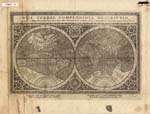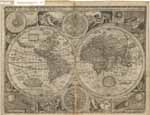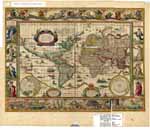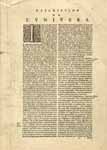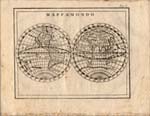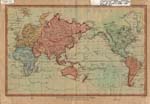C003 Cutter World Maps
Collection Summary back to top
| Title | Cutter World Maps |
| Dates (Inclusive) | 1530-1880 |
| Dates (Bulk) | 1770-1810 |
| Creator | The collection was complied by Margarita P. (Margaret) Cutter. Known cartographers are listed in the description of each individual map. |
| Abstract | This is a heterogeneous collection of old and very rare maps of various parts of the world donated by an estate in Santa Barbara, California. Map #33 is the only Southwest U.S. map in collection. Some digital images are available of this collection. |
| Unique ID | C003 |
| Quantity | The collection totals 77 maps. Smaller maps are in a flat box; larger items are in a map case drawer. |
Historical Note back to top
The inventory draws from cartographic analysis by John F. and Beatrice C. Reed completed in 1984.
Arrangement back to top
The Center has left the maps in the order in which they were described by President Reed.
Scope & Contents back to top
This is a heterogeneous collection of old and very rare maps of various parts of the world.
This collection was donated by the Margarita P. (Margaret) Cutter estate in
Santa Barbara, California. Maps number 1-38, omitting 24. Map 1 contains 20 maps from an atlas; Map 3 has
22 separate maps. Map 33 is the only solely Southwest U.S. map in collection.
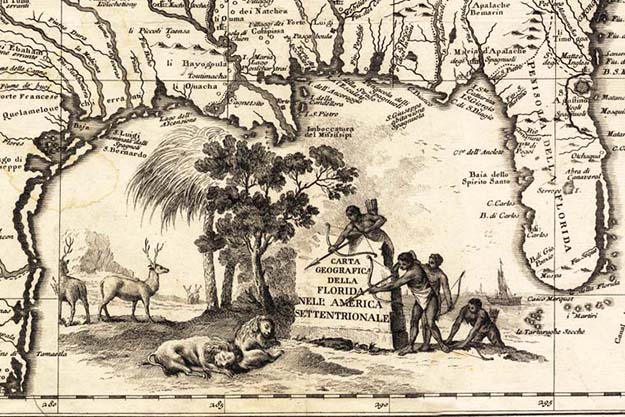
The above detail is from a map made in about 1790, showing locations
of ethnic groups and communities. The title of this map is misleading, as the
area shown includes much of the southwestern portion of the present United States.
Restrictions back to top
Access. There are no access restrictions on the use of these materials for research
purposes. This collection is open to the public for use in the Delaney Southwest Research Library at the Center of Southwest Studies.
Use and Copyright. These materials are for use only in the Delaney Southwest Research
Library; they are noncirculating. Limited duplication of print materials is allowed for research
purposes. The user assumes full responsibility for observing all applicable laws regarding copyright, property rights, and libel.
Preferred Citation back to top
Cutter World Maps, Fort Lewis College. Center of Southwest Studies.
Processing Info back to top
Each of the maps has been inventoried and
all but a bound set have been encapsulated. The finding aid was produced by the Center's archivist with initial data
entry by Tom Schmidt and Melanie Ellison in July 2002. Library student worker
Tia Flippin edited and reformatted the online inventory in the Fall of 2011.
The 12" x 16" color world map made in Venice in 1776 by Antonio Zatta was photographed by Marona Photography in 1997. Digitization was performed
by Nik Kendziorski in July 2003 as part of the Center's Western
Trails grant through the Colorado Digitization Program. Stitching of
oversize maps was completed by volunteer Ed Lederman in the Fall of 2003.
Acquisition Info back to top
The College’s ownership of this collection (accession 1970:02007) is documented by Fort Lewis College President
Rexer Berndt's letter to Charles L. Youngman, Librarian at Durango Public Library, of February 6, 1970. Also, by a memo
from the Center’s director, Robert Delaney, to Youngman on February 5, 1970, and court documents regarding the settlement
of the Margarita P. Cutter estate in Santa Barbara County, California.
Separated Materials back to top
None.
Related Materials back to top
None.
Access Terms back to top
Series/Container List back to top
Continents List
| World North America South America Europe |
Asia Africa Middle East |
World back to
Continent list
Maps showing projections of the world through time.
Arranged by alphabetized location, then by date map was created. All sizes are in inches.
North America back to
Continent list
Maps showing projections of North America through time.
Arranged by alphabetized location, then by date map was created. All sizes are in inches.
| Location | Date | Accession Number | Title | Description | Size | Digital Image |
| Americas, north and south | 1530 | 1970:02007.02 | Untitled map showing the east coast of North and South America, et al. | This map only depicts coast lines, which makes a detailed interpretation of this chart difficult. The original was printed on parchment in the 16th century by Giambattista Agnese (active 1526-1533); this is a copy made in 1910 by H. Lodeman, Staats Bibliothek, Munich. | 10.2" x 15.2" | |
| Atlantic, northern | 1595 | 1970:02007.10 | Atlantis Insula | This map of the Western Hemisphere and edges of the Eastern Hemisphere shows the locations of a few communities and depicts Greenland as a peninsula extending from the North American sector of the boreal land mass, which itself continues to Asia. Canada is labeled Gadinus. Both California and Tierra del Fuego are shown as islands. It is possible that the 1595 year attribution is in error. Conical projection. Cartographer: Nicolao Sanson (Nicholas Sanson). Place of publication: Amsterdam. | 16.5" x 22.2" | |
| Americas, north and south | 1626 | 1970:02007.12 | America, with those known parts in that unknown world, both people and manner of buildings | This map shows locations of communities, with Native towns modeled in the margins of the map. It refers to the Northwest Passage and shows Greenland as a peninsula of the Arctic Continent and depicts whales in the oceans. It shows the legendary gold-rich lost city of El Dorado/ Manoa and Lake Parime. Both California and Tierra del Fuego are shown as islands. Canada is drawn as a small area west of the St. Lawrence River. The Rocky Mountains and Appalachians are connected by an east-west range. The Colorado River (Rio del Norte) is shown as if it were draining the Great Salt Lake. The Great Lakes are not shown. Curved projection. Cartographer: John Speed | 17" x 21.5" | 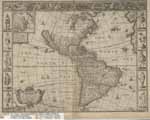 on the back: 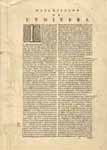 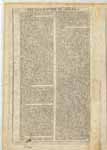 |
| Americas, north and south | 1652 | 1970:02007.15 | Americae Nova descriptio (Map of new America: North and South America and a bit of northeast Asia) | This map makes reference to Magellan's voyage. It shows locations of some ethnic groups and communities in North and South America, with those people and towns illustrated in the margins. Refers to the natives of Greenland using navigational instruments, and notes the use of dugout canoes by Florida natives. Mentions the legendary Quivara (an alternative name for southwestern North America), and shows Greenland as a peninsula from a circumboreal land mass, and California is also depicted as a peninsula. Refers to the Maine-Maritime area as Norumbega. The North Pole is shown in an insert. Curved projection. Cartographer: Nicolaum Visscher | 19.5" x 23.5" | 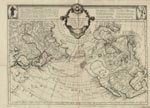 |
| Americas, north and south | 1750 | 1970:02007.30 | Untitled map of North and South America and surrounding oceans | This map, ca. 1750, shows four compass roses with intercepts for both latitude and longitude. It depicts California as an island and shows the Bay of Fundy with its tributary rivers, and to the north Canada as one large area and Nova Britannica as another area, north of New England. Mercator (?) projection. | 25" x 31.5" | |
| North America | 1677 | 1970:02007.16 | L'America Settentrionale, nuouamente corretta, et accresciuta secondo le relationi pui moderne, da Guglielmo Sansone geografo an SM Chriftianis | This map of North America and part of the British Isles shows the locations of some Indian and a few Spanish settlements. Shows the prime meridian, mentions the Seven Cities of Cibola, mentions the legendary Quivara (an alternative name for southwestern North America), and shows Greenland as a peninsula. Canada is labeled in part as New France. Shows California as an island. The central part of North America and everything north of 45 degrees North and west of the Great Lakes and Button's Bay are not mapped. Curved projection. Cartographer: William Sansone. | 18" x 24" | 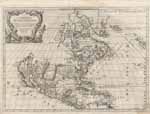 |
| North America | 1746 | 1970:02007.37 | Amerique septentrionale publiee sous les auspices de Monseigneurf le Duc D’Orleans [map of North America] | This map, which was prepared for an atlas compiled from the work of various authors, includes North America and the northern tip of South America. It shows the North American colonies by name, and includes a few pertinent historical notes and notes regarding coasts and islands. The map depicts locations of some Indians/ ethnic groups and communities, and shows California and Greenland as peninsulas. Canada is shown as a huge area on the eastern and northern portions of the North American continent. The central and northern portions of North America are unmapped. Curved projection. Access note: This is a large map. You have two choices for viewing it: One large image or nine portions for faster loading. | 33" x 34.5" | 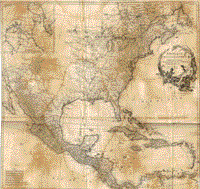 |
| North America | 1750 | 1970:02007.08 | An accurate map of North America drawn from the Sieur Robert, with improvements | This 18th century map (not dated) includes mention of the westward extension of the southern American colonies and shows locations of communities in the Southwest, East Coast, and Central America. It depicts Canada as a large area to the north of the U.S., California as a peninsula, and Greenland as a peninsula separated from North America by the Davis Straits. The entire northwestern part of North America is unmapped. The map includes a few notes regarding historical explorations. Curved projection. Cartographer: Sieur Robert. | 8.5" x 14" |  |
| North America | 1756 | 1970:02007.21 | Mappa dell' America settentrionale (Map of North America -- eastern portion) | This map notes discoveries and other historical information, with inserts partially describing the American colonies, also a line south of Hudson's Bay referring to the Treaty of Utrecht. It shows locations of some North American Indian communities, and maps the Grand Banks with descriptive and directional notes. Mercator projection. Place of publication: Italy. | 11.5" x 15.7" | |
| North America | 1780 | 1970:02007.32 | L’Amerique septentrionale (Map of North America and the northern tip of South America) | This map, ca, 1780, includes notes re: discoveries, shows locations of Indians (Pays des Illinois, Pays des Iroquois, Terre des Esquimaux, et al.), communities in the Southwest and along the Atlantic Coast, and some of the American colonies, mentions the legendary Quivara (an alternative name for southwestern North America), and shows California as a peninsula and Greenland also as a peninsula, designated in two parts, North and South Greenland. Shows Canada as Nouveau France. Conical projection. Cartographer: Royal Academy of Sciences. | 22.2" x 26" | |
| North America | 1787 | 1970:02007.22 | North America, drawn from the latest and best authorities | This map shows states along the Eastern Seabord, mentions discoveries of the West Coast of North America, shows locations of Indian tribes and a few other ethnic groups, communities and settlements, and notes unknown heads of rivers. It mentions the legendary Quivara (an alternative name for southwestern North America). Shows New Albion in California (California is shown as a peninsula), and depicts Canada as a major area north of the present U.S. and south of New Britain and New South Wales, and depicts "mountains of bright stones," bison ("buffaloes"), and "meadows." Conical projection. Cartographer: T. Kitchin. | 15.7" x 18.7" | 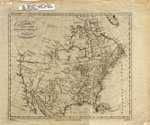 |
| North America | 1795 | 1970:02007.11 | A general map of North America, drawn from the best surveys of 1795 | This map shows the locations of states and cities on the Eastern Seaboard and a few settlements elsewhere. Indians of the Far North are named. The map indicates a sea described by 18th century explorers, with Greenland as a peninsula north of North America and divided into east and west parts. The map infers (by reference to explorers of the 18th century) the existence of a sea (Arctic Ocean, seen by MacKenzie in 1789); Canada is depicted as a large area south of Labrador, north of the present U.S., and south of New South Wales. Curved projection. | 16" x 19.2" | 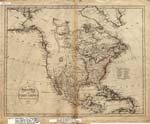 |
| North America | 1797 | 1970:02007.05 | A new map of North America showing all the new discoveries, 1797 | This map shows New Albion in California (California is depicted as a peninsula), the headwaters of the Mississippi River and the names of the new states along the Atlantic Seaboard. Drake's Harbour is labeled, as are the Gulfs of Mexico, Florida, and California. Shows locations of ethnic groups and communities. The name Canada does not appear on this map, but Quebec City and Montreal are both shown. Curved projection. | 8.5" x 10" | 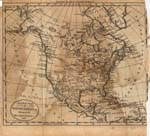 |
| North America | 1810 | 1970:02007.03P | L'America settentrionale, divisa ne'suoi princpali stati (Map of North America) | This is one map (page 25) in a collection of 22 maps produced for the London Magazine. These maps represent a standardized cartography, with fairly faithfully reproduced major features -- both political and physiographic -- throughout. The labeling is in Italian. On this map, Canada is shown as the large area northerly with Quebec City/ Montreal. Some attention is given to colonial possessions. The polar regions are not well done; a large Mare d'Ouest is obviously in error. Cartographer: Giorgio Valerio Pasquali, engraver. | 7.5" x 10.5" | 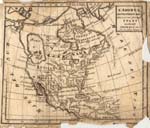 |
| North Pacific | 1796 | 1970:02007.14 | Carta del Mar Pacifico del Nord (Map of the North Pacific) | This map, produced for the purpose of showing the routes of the explorations made by Cook and Meares, reports citations of oceans seen in the Arctic north of North America, depicts shoals off of northern North America, shows the routes of the explorations by Cook and Meares, and shows locations of some ethnic groups and communities in North America and Asia. Mercator projection. Cartographer: Antonio Zatta. | 18.7" x 23.5" | 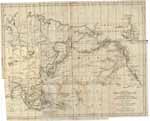 |
| Northwest coast of America and the northeast coast of Asia | 1750 | 1970:02007.35 | Carte des nouvelles descouvertes, au Nord de la Mer du Sud, tant a l’Est de la Siberie dt du Kamtchatka, qu’al Ouest de la Nouvelle France (Map of new discoveries to the north of La Mer du Sud) | This map of the northern hemisphere including North America and Asia includes notes re: discoveries, shows locations of Indians and other ethnic groups and communities, mentions the legendary Quivara (an alternative name for southwestern North America), and shows California as a peninsula. Greenland is also depicted as a peninsula, related to the North American land mass. Canada is broadly conceived as the whole area north of the present U.S. Quebec City and Montreal are both shown as if on Lake Huron. Conical projection. Place of publication: Venice. Cartographer: Francois Santini. | 21.5" x 30.5" | 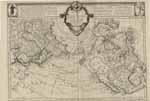 |
| Northwest coast of America and the northeast coast of Asia | 1770 | 1970:02007.04 | A new map of the northwest coast of Asia and the northwest coast of America, with the late Russian discoveries | This map, produced for the London Magazine, shows several Russian voyages of discovery, and communities in Asia. It only shows some coast lines of North America. The proportions North-South and East-West in North America are vague. Conic projection. | 8.25" x 10.5" | |
| Northwest coast of America and the northeast coast of Asia | 1776 | 1970:02007.20 | Nuove Scoperte De'Russi al Nord del Mare del Sud si nell Asia, che nell America (Map of the world north of the Tropic of Cancer) | This map shows locations of ethnic groups and communities, and mentions the legendary Quivara (an alternative name for southwestern North America). Shows New Albion in California. Canada is broadly conceived, with waterways (?) across the north related to t he search for a Northwest Passage. Includes illustrations of animal life. Conical projection. Cartographer: Antonio Zatta. | 12.5" x 16" | 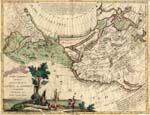 |
| Southeastern United States | 1790 | 1970:02007.36 | Carta geografica della Florida dell America settentrionale (Map of Florida: the southeastern portion of the present day United States; but it includes much of the Southwest also) | This map, circa 1790, shows locations of ethnic groups and communities, and mentions some navigational aids. The title of this map is misleading, as the area shown includes much of southwestern present U.S.; it would more properly be called a map of "Florida," i.e. the region extending from Florida towards southwestern North America. The Gulf of Mexico is not labeled. Illustrations of animals, plants and people are in the margins. Conical projection. | 13.7" x 17.5" | 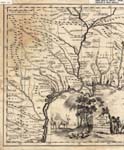 |
| Southwestern United States, central America | 1814 | 1970:02007.33 | Spanish North America | This map of part of North America and Central America was drawn and engraved for Thompson's New General Atlas of 1814. It shows the locations of many Indian ethnic groups and notes many political sub-units of Spanish America. Rivers of the Southwest are included and labeled. California is presented as a peninsula with its coastline intimately delineated. The Rio Grande is labeled the Rio Bravo del Norte. The Rio de las Animas is shown, as is the San Juan River (which is called the Rio Nabajia). The San Juan Mountains are called the Sierra de las Gullas. Santa Fe is prominently shown. Although Louisiana had been purchased from France in 1807, this map shows it still separate from the United States. Conical projection.(the map at right is a portion of the upper left quarter of this map). | 21" x 28.2" | 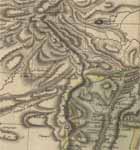 |
| United Sates of America | 1783 | 1970:02007.09 | A map of the United States of America, as settled by the Peace of 1783 | This map shows locations of ethnic groups and communities, and alludes to some oceanic features. An off-shore line is called "the limited boundary of the seacoast of the United States." The map clearly indicates the boundaries of Canada, Hudson's Bay, and Louisiana. The U.S. boundary of Canada is prominent, but little north of that boundary is depicted except for Montreal. Mercator projection. Cartographer: I. Fielding. | 9.25" x 11.2" | |
| Western Hemisphere, The Americas | late 17th or early 18th century | 1970:02007.01S | America, secondo le ultime osservazioni dell Accademia Reale delle Scienze di Parigi (Map of the Western Hemisphere, The Americas) | This is one map (page 220) in a bound volume of twenty maps that are from a geography textbook that is missing its table of contents. The page numbering of the maps is not consecutive. The titles are in Italian, derived from an edition issued by the Royal Academy of Sciences in Paris, France. Each map includes lines of latitude and longitude. Because the Royal Academy of Sciences of Paris was established in 1666, it is estimated that this textbook was published in the late 17th century or the early 18th century. This map of North America is remarkably accurate with respect to size and length: width ratio. Cartographer: Academy of Sciences, Paris. | 7.5" x 10" |
South America back to
Continent list
Maps showing projections of South America through time.
Arranged by alphabetized location, then by date map was created. All sizes are in inches.
Europe back to
Continent list
Maps showing projections of Europe through time.
Arranged by alphabetized location, then by date map was created. All sizes are in inches.
Asia back to
Continent list
Maps showing projections of Asia through time.
Arranged by alphabetized location, then by date map was created. All sizes are in inches.
Africa back to
Continent list
Maps showing projections of Africa through time.
Arranged by alphabetized location, then by date map was created. All sizes are in inches.
| Location | Date | Accession Number | Title | Description | Size | Digital Image |
| Africa | late 17th century or early 18th century | 1970:02007.01R | Africa, secondo le ultime osservazioni dell Accademia Reale delle Scienze di Parigi (Map of Africa) | This is one map (page 205) in a bound volume of twenty maps that are from a geography textbook that is missing its table of contents. The page numbering of the maps is not consecutive. The titles are in Italian, derived from an edition issued by the Royal Academy of Sciences in Paris, France. Each map includes lines of latitude and longitude. Because the Royal Academy of Sciences of Paris was established in 1666, it is estimated that this textbook was published in the late 17th century or the early 18th century. Cartographer: Academy of Sciences, Paris. | 7.5" x 10" | |
| Africa | 1810 | 1970:02007.03T | L'Africa divisa nei suoi principali stati (Map of Africa) | This is one map (page 23) in a collection of 22 maps produced for the London Magazine. These maps represent a standardized cartography, with faithfully reproduced major features -- both political and physiographic -- throughout. The labeling is in Italian. Place of publication: Venice. Cartographer: Giorgio Valerio Pasquali, engraver | 7.5" x 10.5" | |
| Egypt | 1760 | 1970:02007.07 | Carta dell Antico Egito (Map of ancient Egypt) | This map, from the first volume of an atlas, shows some oases and outposts, the Great Pyramids of Egypt, fluvial vegetation and animals, and locations of ethnic groups and communities in Egypt and Ethiopia. | 8.25" x 12.5" | |
| North Africa | 1810 | 1970:02007.03L | Barbaria, Egitto, Nigrizia, Guinea, Nubia, Abissina. Del Giografo Lamarche (Map of Barbaria, et al. -- North Africa, south to the Equator) | This is one map (page 24) in a collection of 22 maps produced for the London Magazine. These maps represent a standardized cartography, with faithfully reproduced major features -- both political and physiographic -- throughout. The labeling is in Italian. Place of publication: Venice. Cartographer: Giorgio Valerio Pasquali, engraver | 7.5" x 10.5" |
Middle East back to
Continent list
Maps showing projections of the Middle East through time.
Arranged by alphabetized location and date map was created. We recognize that the Middle
East is not in truth a continent; however most people would not look to Asia to
find maps of the region.
| Location | Date | Accession Number | Title | Description | Size | Digital Image |
| Egypt | 1760 | 1970:02007.07 | Carta dell Antico Egito (Map of ancient Egypt) | This map, from the first volume of an atlas, shows some oases and outposts, the Great Pyramids of Egypt, fluvial vegetation and animals, and locations of ethnic groups and communities in Egypt and Ethiopia. | 8.25" x 12.5" | |
| [Holy Lands], Judea | late 17th century or early 18th century | 1970:02007.01T | Judea, ex Nuovo Testameto descripta (Map of Judea) | This is one map (page 356?)-- the last page in a bound volume of twenty maps that are from a geography textbook that is missing its table of contents. The page numbering of the maps is not consecutive. The titles are in Italian, derived from an edition issued by the Royal Academy of Sciences in Paris, France. Each map includes lines of latitude and longitude. Because the Royal Academy of Sciences of Paris was established in 1666, it is estimated that this textbook was published in the late 17th century or the early 18th century. Cartographer: Academy of Sciences, Paris. | 7.5" x 10" | |
| Middle East | 1810 | 1970:02007.03J | Carta delle regioni e luoghi di cuisiparla nel Nuovo Testamento (Map of the New Testament Land / Palestine / Judea) | This is one map (page 27) in a collection of 22 maps produced for the London Magazine. These maps represent a standardized cartography, with faithfully reproduced major features -- both political and physiographic -- throughout. The labeling is in Italian. Place of publication: Venice. Cartographer: Giorgio Valerio Pasquali, engraver | 7.5" x 10.5" |

